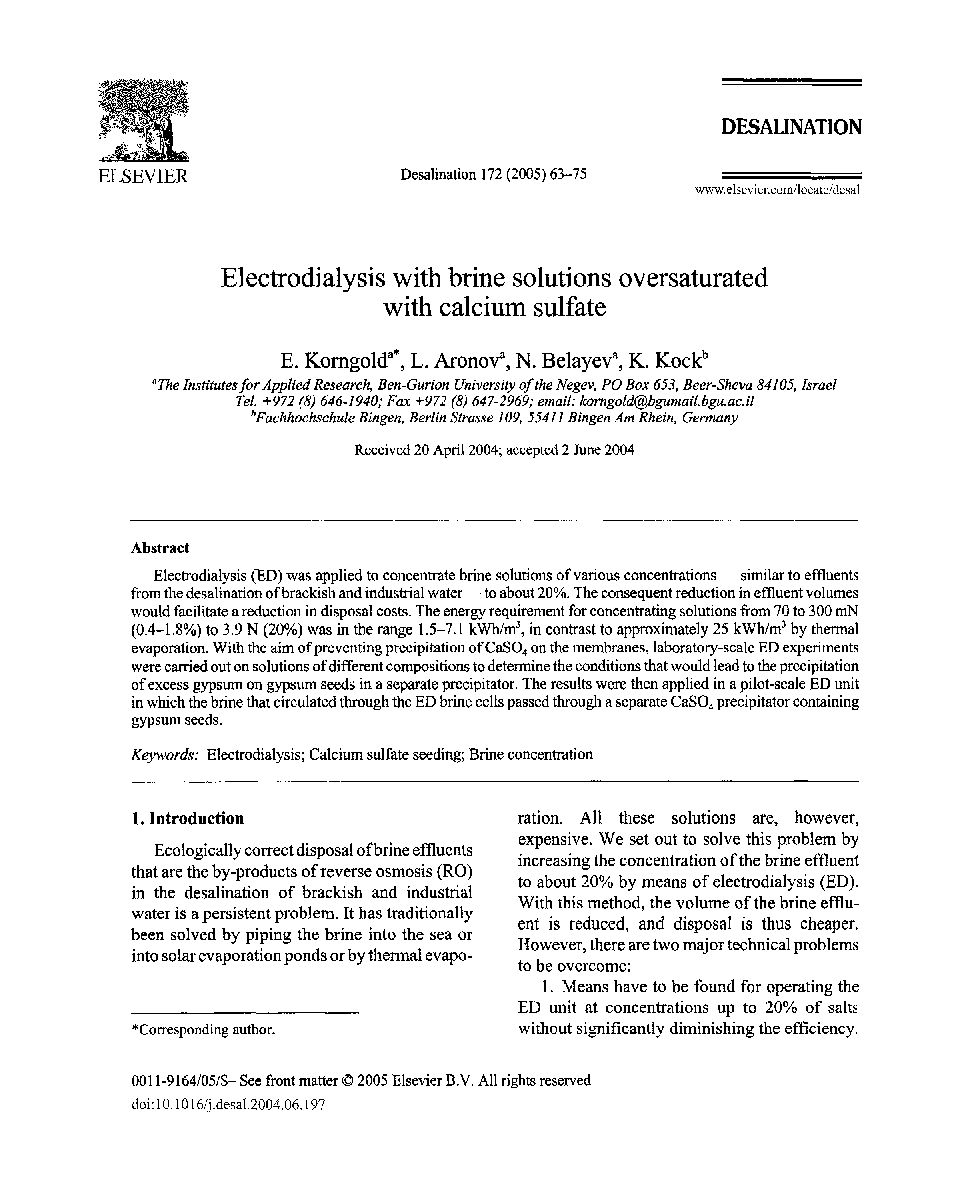| Article ID | Journal | Published Year | Pages | File Type |
|---|---|---|---|---|
| 10386242 | Desalination | 2005 | 13 Pages |
Abstract
Electrodialysis (ED) was applied to concentrate brine solutions of various concentrations - similar to effluentsfrom the desalination of brackish and industrial water - to about 20%. The consequent reduction in effluent volumes would facilitate a reduction in disposal costs. The energy requirement for concentrating solutions from 70 to 300 mN (0.4-1.8%) to 3.9 N (20%) was in the range 1.5-7.1 kWh/m3, in contrast to approximately 25 kWh/m3 by thermal evaporation. With the aim of preventing precipitation of CaSO4 on the membranes, laboratory-scale ED experiments were carried out on solutions of different compositions to determine the conditions that would lead to the precipitation of excess gypsum on gypsum seeds in a separate precipitator. The results were then applied in a pilot-scale ED unit in which the brine that circulated through the ED brine cells passed through a separate CaSO, precipitator containing gypsum seeds.
Keywords
Related Topics
Physical Sciences and Engineering
Chemical Engineering
Filtration and Separation
Authors
E. Korngold, L. Aronov, N. Belayev, K. Kock,
